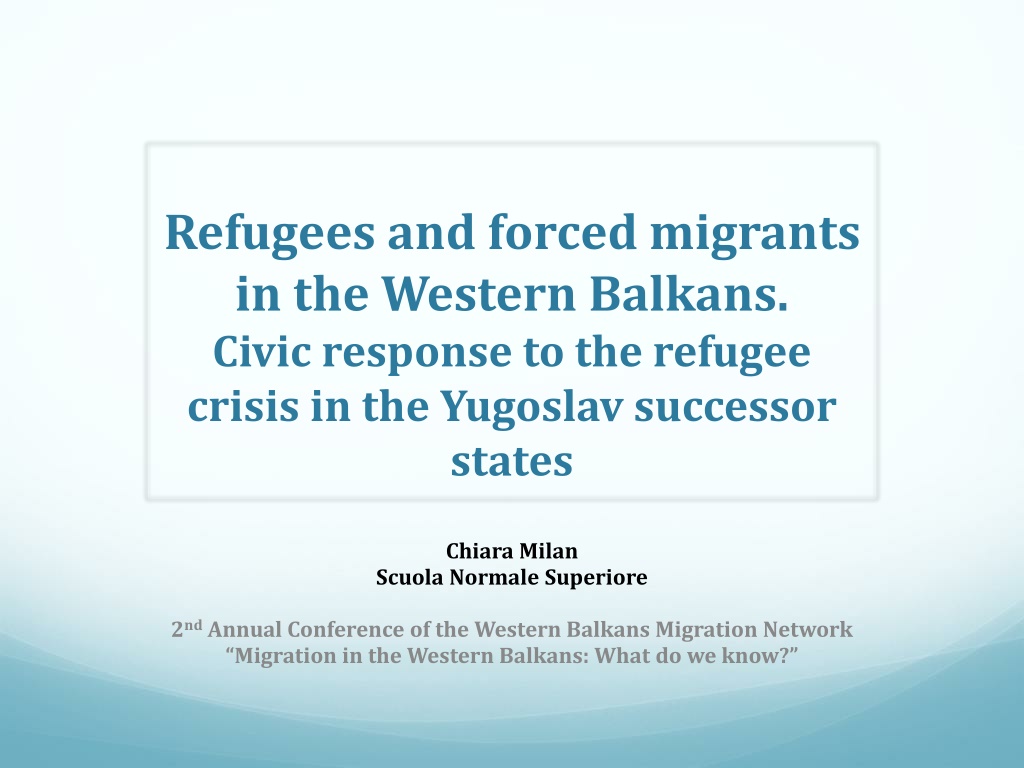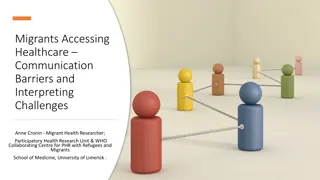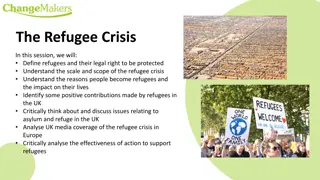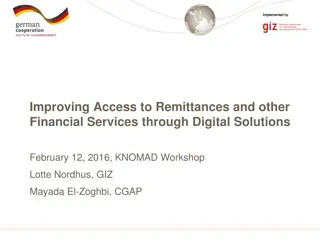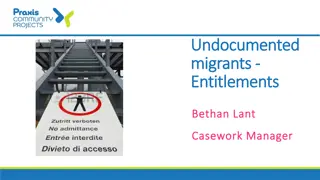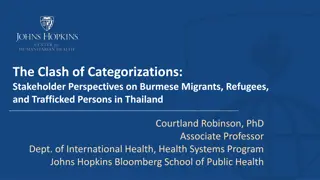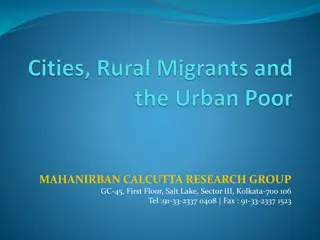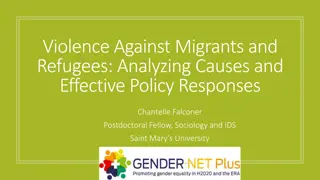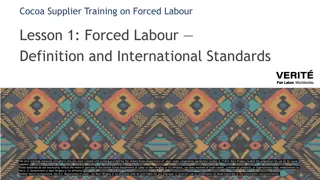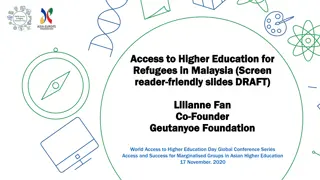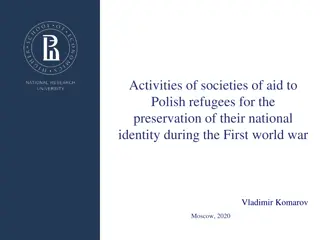Refugees and forced migrants
This study examines grassroots activism and civic responses to the refugee crisis in the Yugoslav successor states within the Western Balkans region. It delves into the factors influencing civic engagement and coalition-building, analyzing the pro-refugee activism and self-organized initiatives in countries along the Western Balkans route. The methodology includes in-depth interviews, participant observation, and a focus on collective action during the peak of the refugee crisis.
Download Presentation

Please find below an Image/Link to download the presentation.
The content on the website is provided AS IS for your information and personal use only. It may not be sold, licensed, or shared on other websites without obtaining consent from the author.If you encounter any issues during the download, it is possible that the publisher has removed the file from their server.
You are allowed to download the files provided on this website for personal or commercial use, subject to the condition that they are used lawfully. All files are the property of their respective owners.
The content on the website is provided AS IS for your information and personal use only. It may not be sold, licensed, or shared on other websites without obtaining consent from the author.
E N D
Presentation Transcript
Refugees and forced migrants in the Western Balkans. Civic response to the refugee crisis in the Yugoslav successor states Chiara Milan Scuola Normale Superiore 2ndAnnual Conference of the Western Balkans Migration Network Migration in the Western Balkans: What do we know?
Outline the Western Balkans route: an overview Grassroots responses to the refugee crisis: What kind of activism? Which factors account for civic response and cross-movement coalitions? Conclusions
Methodology WB route: September 2015-March 2016 In-depth interviews with key informants (activists, journalists, volunteers, refugees) Participant observation in the parks of Belgrade Under the umbrella of the ERC-funded project Collective action and the refugee crisis
The Western Balkans route WB corridor (late August 2015-March 2016) Closure of the Hungarian-Serbian and Hungarian-Croatian border (Sept. 2015) 760,000 migrants (2015)
Pro-refugee activism during the long summer of migration New actors, and already existing ones (human rights associations and groups; left-libertarian parties; solidarity movements; religious organizations) Mobilization across gender, national belonging and class
Macedonia, the entry point NGO Legis, NGO MYLA advocacy SOLIDARNOST left-wing organization Help the refugees in Macedonia FB page virtual platform
Serbia, the bottleneck Refugee Aid Miksali te: first-aid, distribution centre Infopark: first-aid, food distribution, legal information
No border Serbia self- organized initiatives, contentious actions (No border hostel) Refugees protests and the March of Hope July 2016, October 2016
Croatia, a forced transit country Welcome! Initiative advocacy platform, legal support, policy proposals Are you Syrious? group first-aid, distribution group, informal and friend-based network , daily digests
Slovenia, the last transit hub ROG Autonomous Social Center Anti-racist front without borders Central node for migrant organizing Second home: self- organized migrants place
Which factors account for the civic response? 1. Emotions 1. Space 1. Resources
1) Emotional component Background as refugees or personal experience of displacement Identification with the migrants collective memory of forced displacement attribution of similarity that creates emotional linkages assignment of a common meaning
2) Space WB as countries of transit rather than countries of destination Position along the migrant route favoured the perception of a temporary migration -> migrants did not constitute a threat Migration framed as humanitarian rather than economic
3) Resources Activating existing networks -> re- activating networks at the community level Social media platforms -> facilitated the creation of coalitions in absence of direct relational ties
Conclusions CS response vs. state response New subjects Shifting focus of the existing ones Cross-national coalitions Online networking
Temporary nature of refugees presence (and passage) targeted actions no long-term strategies loose and ephemeral networks
Thanks for your attention! Chiara.Milan@sns.it
